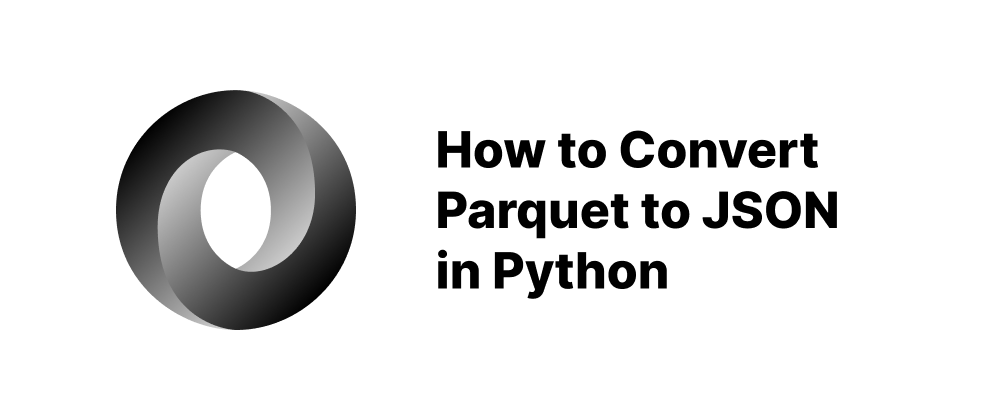How to Convert JSON to an HTML Table: A Comprehensive Guide
Wenhao Wang
Dev Intern · Leapcell

Key Takeaways
- JSON can be easily converted to HTML tables using JavaScript, online tools, or Python.
- Specialized tools and custom scripts are needed for handling nested JSON structures.
- Choosing the right method depends on technical skills and complexity of the data.
JSON (JavaScript Object Notation) is a widely used data format for transmitting structured data. However, for better readability and presentation, especially on web interfaces, it's often necessary to convert JSON data into an HTML table. This guide explores various methods to achieve this, catering to different needs and technical proficiencies. (4 ways to convert JSON to tabular format - Fabi.ai)
1. Using JavaScript to Convert JSON to HTML Table
JavaScript provides a straightforward way to transform JSON data into an HTML table. Here's a step-by-step approach:
-
Extract Table Headers: Determine the keys from the JSON objects to serve as table headers.
-
Create Table Structure: Use DOM manipulation to create
<table>,<thead>, and<tbody>elements. -
Populate Table Rows: Iterate over the JSON array, creating a table row (
<tr>) for each object and table data cells (<td>) for each value. -
Append to DOM: Insert the constructed table into the desired location in the HTML document.
For a detailed example, refer to the tutorial on GeeksforGeeks: (How to convert JSON data to a html table using JavaScript/jQuery)
2. Utilizing Online Tools for JSON to Table Conversion
For those who prefer a no-code solution, several online tools can convert JSON data into tables:
-
JSON Tabulator by LikeGeeks: This browser-based tool allows users to upload or paste JSON data and view it as a formatted table. It offers features like flattening nested objects, managing columns, and exporting to formats like CSV and Excel. (JSON Tabulator: Convert JSON To Table - likegeeks.com)
-
WtpDataLab's JSON to Table Converter: This tool not only converts JSON to tables but also provides visualizations like network graphs to represent the structure of complex JSON files. (JSON File to Table Converter - WtpDataLab)
3. Leveraging Python for JSON to Table Conversion
Python, with its rich set of libraries, offers powerful methods to handle JSON data: (4 ways to convert JSON to tabular format - Fabi.ai)
-
Using Built-in Libraries: Python's
jsonandcsvmodules can be combined to read JSON data and write it into a CSV file, which can then be viewed as a table.import json import csv with open('data.json') as json_file: data = json.load(json_file) with open('data.csv', 'w', newline='') as csv_file: writer = csv.DictWriter(csv_file, fieldnames=data[0].keys()) writer.writeheader() for row in data: writer.writerow(row) -
Using Pandas Library: For more complex JSON structures, Pandas provides the
read_jsonfunction to load JSON data into a DataFrame, which can then be exported to CSV. (4 ways to convert JSON to tabular format - Fabi.ai)import pandas as pd df = pd.read_json('data.json') df.to_csv('data.csv', index=False)
These methods are particularly useful for data analysis and manipulation tasks. (4 ways to convert JSON to tabular format - Fabi.ai)
4. Employing jQuery for Dynamic Table Generation
jQuery simplifies the process of fetching JSON data and dynamically generating HTML tables: (How to Convert JSON to an HTML Table - wpdatatables.com)
-
Fetch JSON Data: Use
$.getJSON()to retrieve JSON data from a source. -
Create Table Elements: Dynamically create
<table>,<thead>, and<tbody>elements. -
Populate Table: Iterate over the JSON data to create rows and cells, appending them to the table. (How to Convert JSON to an HTML Table - wpdatatables.com)
-
Insert into DOM: Append the constructed table to the desired element in the HTML document. (JavaScript: Displaying JSON data as a table in HTML)
This approach is beneficial for applications requiring real-time data updates. (How to Convert JSON to an HTML Table - wpdatatables.com)
5. Advanced Techniques: Handling Nested JSON Structures
Nested JSON objects can pose challenges when converting to a flat table format. To address this: (JSON Tabulator: Convert JSON To Table - likegeeks.com, How to Convert JSON to an HTML Table - wpdatatables.com)
-
Flatten Nested Objects: Transform nested JSON into a flat structure by concatenating keys.
-
Use Specialized Tools: Tools like JSON Tabulator offer options to flatten nested objects and include array indices, making complex JSON data more manageable. (JSON Tabulator: Convert JSON To Table - likegeeks.com)
-
Custom Scripts: Write custom scripts in languages like Python or JavaScript to parse and restructure nested JSON data into a flat table format.
Conclusion
Converting JSON data into an HTML table enhances data readability and presentation, especially in web applications. Depending on your specific needs and technical expertise, you can choose from various methods, including direct JavaScript manipulation, utilizing online tools, leveraging Python scripts, or employing jQuery for dynamic content. For complex or nested JSON structures, specialized tools or custom scripts may be necessary to achieve the desired table format.
By understanding and applying these techniques, you can effectively transform JSON data into structured, user-friendly tables suitable for various applications.
FAQs
Using JavaScript to create and populate a table is the simplest method.
Use flattening techniques or specialized tools like JSON Tabulator.
Yes, online converters like WtpDataLab and LikeGeeks offer user-friendly options.
We are Leapcell, your top choice for hosting backend projects.
Leapcell is the Next-Gen Serverless Platform for Web Hosting, Async Tasks, and Redis:
Multi-Language Support
- Develop with Node.js, Python, Go, or Rust.
Deploy unlimited projects for free
- pay only for usage — no requests, no charges.
Unbeatable Cost Efficiency
- Pay-as-you-go with no idle charges.
- Example: $25 supports 6.94M requests at a 60ms average response time.
Streamlined Developer Experience
- Intuitive UI for effortless setup.
- Fully automated CI/CD pipelines and GitOps integration.
- Real-time metrics and logging for actionable insights.
Effortless Scalability and High Performance
- Auto-scaling to handle high concurrency with ease.
- Zero operational overhead — just focus on building.
Explore more in the Documentation!
Follow us on X: @LeapcellHQ




